Lord! Touchless kitchen faucets have already blown our minds. I highly presume that you’re one of them.
Aren’t you?
wait! I think you’ve already disregarded touch faucets. Whereas, it bears sophisticated perks too.
Now, I really want to wipe away all the subconscious conflicts by showcasing touchless faucets v/s touch faucets.
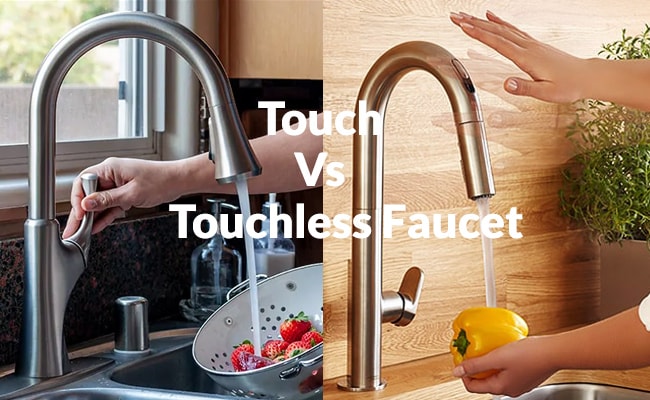
Touch vs Touchless Faucet
Honestly, you need a quick reality check on touch faucet or touchless faucet.
Because, whenever I am scrolling the kitchen-fixture websites, I see people spilling their different opinions in regard of that fact “touch or touchless faucet?”.
Well, if you use your senses, you’ll understand that both of them are different due to performances and preferences. Touch faucets need to be turned on by touching the handle or drip, but touchless faucets use sensors to detect when a hand is moving and turn the water on automatically.
Touchless taps are thought to be cleaner because you don’t have to touch them with your dirty hands. Still for breaking the confusion, here I’ve dropped a short information on the differences between touch and touchless faucet. Come on, have a look!
Recommended reading: All About Touchless Kitchen Faucet
The Primary Differences Between Touch and Touchless Kitchen Faucet
Here are the differences between touch faucet and touchless faucet.
Touch Faucets
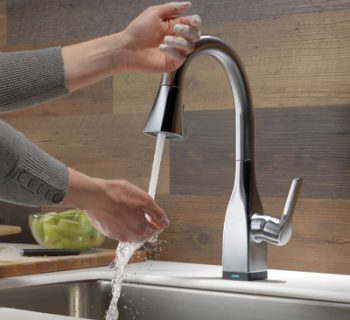
Umm, touch faucets seek for your touch (pretty obvious) to get accessed with the sensor. Now, as it has spout to count our body’s internal electricity, it conveys an indication while capacitance increases.
Thus, it gets instant on and off. Simple!
I am yet to illustrate the perk of it. Well, it’s smartly crafted to specify the difference between your touch and prolonged grip.
Hence, you don’t require to pant-on about constant on and off while washing your dishes or doing any cleaning thingy.
Pros
- Mess-free clean faucet.
- Effortless cleaning.
- Affordable.
- Safe for Toddlers.
Cons
- Frequently dangerous due to electricity access.
- Tricky installation.
- Batteries aren’t likely to last long.
- Transmits germs and bacteria.
Touchless Faucets
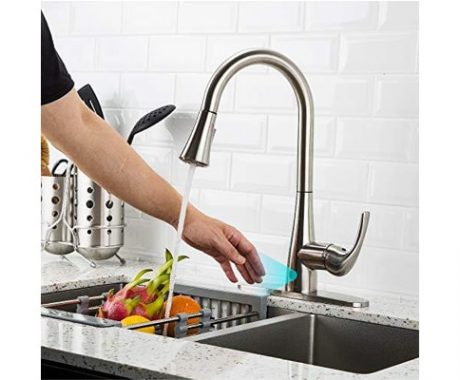
Well, it also relies on the sensors. Not similarly but typically yes.
However, it’s fortified on the bottom of the kitchen faucet’s neck. And it tremendously detects our body movement and perform as we aspire!
Luckily, it will always have your back while working near your kitchen sink. Meaning it’s specifically crafted to avoid any kind of accidental movement.
Now, we can surely move into the pros and cons. What say?
Pros
- Easy installation.
- Doesn’t require extra equipment to install.
- Remains glossy and clean.
- Durable.
- Saves electricity.
- Looks appealing for long.
- Stainless finish.
Cons
- Unsafe for toddlers.
- Requires AA batteries.
- Pricy.
- Might have problem during cleaning the faucet.
- Temperature control is inconvenient.
Downside
Now, it’s pretty obvious that both will bear some downsides. Because, come on! Practically, technology isn’t errorless. Thus, you require to stick on the least flawed kitchen faucet for a long run.
Okay! I can imagine your poker face here as you’re surely confused due to the downsides.
Don’t worry, once you come closer to the delights of touch faucets or touchless faucets, you can easily choose yours.
Why You Should Get Touch Kitchen Faucets
- No matter your both hands get messy due to some cooking or crafting stuff, you can still turn on-off your kitchen faucet with one single touch at anywhere. You can use your elbow or wrist or even your forearm.
- Say goodbye to dusty-sticky faucets as you can clean it thorough one wipe away.
- You’re prone to have that constant fear of toddlers that they might leave the faucet on. But here you don’t need to worry more. Because turning off the faucet is very handy through the knob or handle.
However, in most cases children can’t reach out to the faucet handle so that they are less likely to leave it on.
- Smart touch faucets indicate the temperature rises by changing colors.
- It dissolves the chances of any inconveniences such as scorching or bruise burn anyone.
- Also, provides battery replacement alert.
Why You Should Get Touchless Kitchen Faucets
- Effortless and straightforward installation. Although if you’re a DIY person who feels good about themselves for fixing own kitchen tools then your hands gonna thank touchless faucets.
- It remains catchy and shiny for long time. As it’s barely touched and, also the cleaning is super-duper easy.
- Luckily, it bears manual handle towards the sensor.
- Less-likely to transmit bacteria.
- It provides ample durability. But these faucets used to indulge in many complications. Also, back then, some faucets used to on-off automatically without any wave or touch senses.
Gladly, technicians managed to dissolve the problems and thus we can rely on it now.
- Surprisingly it eventually saves electricity and water through sustainable sensors which shut the faucet off when it’s no longer in use.
Now you can easily choose yours according to your preference. So basically, cut the cake and eat it too.
Recommended reading: Kitchen Faucet Buying Guide
Final Word
Instead of getting hyped over something, you better play wisely. Thus, reconsider your requirements and bring out the best of these kitchen faucets.
Tell us your thoughts on this article and what do you think which one is the best to go-to?
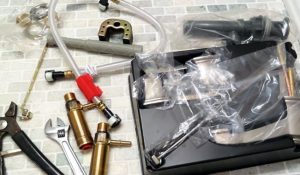
Tools for Kitchen Faucet Removal Process
In your life, if you have ever changed a kitchen faucet, then you might know that it is not the easiest process, and you are
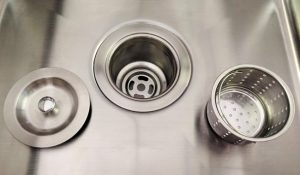
The 6 Main Types of Kitchen Sink Strainer for Your Kitchen
Concerning the kitchen sink strainer types or kitchen sink strainer basket types, either both are tremendously crucial for our sink drainage system. Debris is the

Glacier Bay Faucet Brand Review – Good or Bad?
When it comes down to facets, the name Glacier Bay goes up on the top list. With years of experience and excellence, this brand has
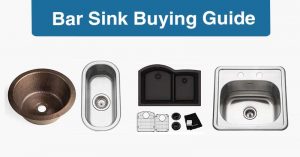
Bar Sink Buying Guide | How to Choose The Right One
Have you shifted to a new house? Are you planning a change in the interior design? Are you prepping up to buy a bar sink?
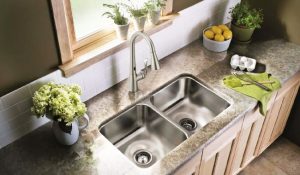
Moen 7594ESRS Arbor Motionsense Touchless Kitchen Faucet Review
In the new day and age, we are always on the lookout for something new and more innovative than the last one we used. We

My Kitchen Faucet Won’t Turn Off – What Should I Do?
Have you turned off your kitchen faucet, but still, the water continues to flow? When your faucet doesn’t turn off, you may see two types


